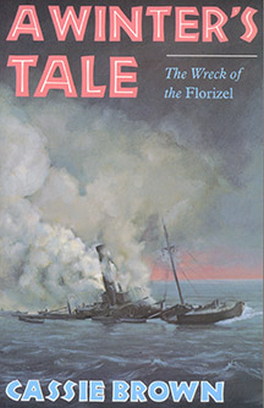Although primarily associated with filling doctors' prescriptions and selling medicines and other items for self-care, historically drugstores have also been operated as general stores, selling an intriguing range of toiletries, perfumery, confectionery, seeds for the garden, and household items. For many years, the shopping experiences of customers owed a good deal to the distinctive drugstore aura created by a store's elegant wooden fixtures, rows of attractive glass containers, and a characteristic aroma arising from drugs and the preparations compounded on the premises. Newfoundland Drugstores by John K. Crellin is a fascinating account of the important and varied roles that drugstores played in Newfoundland society.
A diversity of reasons existed for patronizing a particular store: neighbourhood convenience, easy credit, a druggist’s prominence in civic affairs, courteous service and credible advice, etc. Perhaps, too, a druggist advised customers, many of whom were regulars, as part of general conversations about this and that. After his death in 1880, McMurdo was remembered as there being no more courteous a man ever “handed a dose of medicine to a sick customer. . . . His style in his shop sent many a man home in better health without his even taking his medicine.” It is easy to reflect how different this is from what today has become a pharmacist’s mandated professional obligation to “counsel patients.”
Customer allegiance might also have been fostered by an indefinable drugstore atmosphere, part of a shopping experience. In relatively small stores, as most were, a customer might even feel overawed not just with the odours of drugs and spices, but also with the floor-to-ceiling wall furnishings with open or glass-fronted shelving standing on companion banks of drawers and cupboards. One St. John’s store, Connors, had a particularly attractive set of ornate oak fixtures imported from Britain in the 1880s. At the time, such fittings, although rarely so elaborate and invariably dark rather than light, were readily purchased from wholesale companies specializing in medical and pharmaceutical fixtures and sundries.
A variety of small display cases completed the furnishings, even some specifically for sponges. All this offered a sense that elegance, long typical of pharmacies in Europe, had become very much part of efforts to enhance a distinctive professional image. Lighting, too, was an important consideration. Although oil lamps could be relatively bright, and gas lighting became available after 1845, dull days brought gloominess inside a store, even with larger windows, although maybe this added to the mystique of the surroundings.
Adding to the distinctiveness of a store were rows of elegant containers for drugs and medicines with labels indecipherable to the general public. Although handsome ceramic containers had once been the mainline storage vessels for medicaments, by the second half of the 1800s, glass containers (“shop rounds”) had taken over. Newfoundland druggists mostly purchased American-manufactured rounds with elegant labels protected by thin glass covers. A photograph of an early 1900s Newfoundland drugstore, Cantwell’s of Brigus, shows such containers.
It is unknown whether the Dearin and McMurdo stores of the 1860s and 1870s had special British pottery containers for the bloodletting leeches they sold not only to physicians, but also to the general public, along with advice on how to apply them! In any case, glass leech “aquaria” were more convenient to see and capture a leech. For a reason still uncovered, decorative leech jars were produced as one of a matching set of three, the other two being for honey and tamarinds. Although the latter products, sold to Newfoundlanders, had medicinal reputations (for example, tamarinds as a mild laxative, and honey in many chest and throat preparations), the large size of the jars was hardly convenient for removing the relatively small quantities used or sold at a time.
In his book Newfoundland Drugstores: A History, John K. Crellin allows us to peer into a nineteenth-century drugstore and imagine the sights and smells within the shop. The book is laid out much like the store shelves — filled with research on different products and remedies — and the author plays the role of the trusted druggist, sharing his personal knowledge and expertise with the customer.-- Canada’s History --























